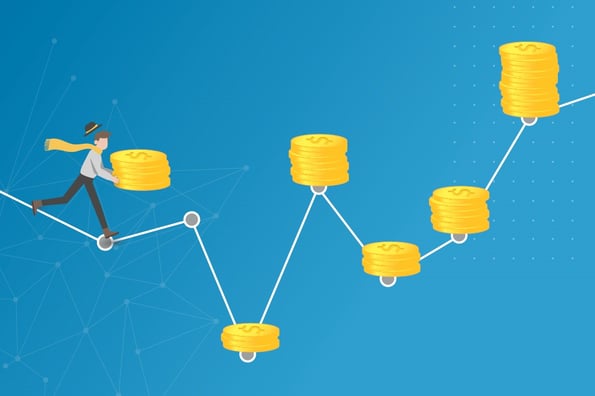Successful direct response fundraising campaigns feature many finely tuned elements including demographically appropriate appeals, images, materials, and keen insights about the best timing of solicitations. All these attributes and many more convey a deep understanding of the donor and their connection to the cause. They are intentionally selected to connect on a more personalized level at scale with individual donors. However, there remains one campaign rudiment that is still often left to rote standardization, the personalization of gift array values.
Gift array values – those strings of suggested gift amounts that nonprofits propose to donors – are powerful tools for guiding a donor’s next gift. This is especially true for direct response campaigns, whose respondents are not in regular, personal contact with a nonprofit’s staff in the same manner that major donors enjoy.
Yet until recently, fundraisers faced few good options to easily employ individually personalized gift array values at scale. Unique values calculated for each donor that accurately predict donor sentiment in real-time. Amounts that uniquely resonate with each patron and optimize fundraising with the scores of individual donors that typically account for more than 50% of nonprofit operating budgets.
The most traditional approach to creating personalized gift arrays is to manually assign them to each donor. This method is extremely laborious, time intensive, and given the lack of insight about the donor, highly ineffective at optimizing fundraising. At Swarthmore College outside of Philadelphia, PA, the Director of Marketing for Alumni and Parent Engagement reported spending 30-40 hours every August manually creating gift arrays for each individual donor – a tedious experience that many fundraisers cannot imagine doing. Moreover, no matter how the donor responded to the solicitations, those gift arrays remained static for the balance of the year. It was simply too much work to recalculate them.
The next approach is RFM, as most fundraisers do not intuitively consider employing the opposing concepts of personalization and scale in calculating gift array values, viewing the two as incompatible. As a result, the best alternative is to resort to RFM Modeling (Recency, Frequency, and Monetary) to segment donors, and then create gift array values based on a multiple of historic giving levels. RFM modeling produces gift array values, typically three per solicitation, and based on previous gifts plus some standard escalations.
While RFM modeling aims to create more relevant gift arrays based on prior giving history, it is still a relatively static approach to appeals that fails to provide individual insight around donor sentiment. The formula typically boils down to a blanket ask for the last amount donated and then standard increases i.e. 1.25X over the donor’s last gift amount for each of the subsequent slots in the gift arrays used. This method does not get any more dynamic or insightful than that. The approach of using RFM segmentation and standard increments in gift array values is not adaptive. It does not dynamically estimate donor sentiment in real-time, or accurately predict the optimal ask amount for the solicitation. It also cannot enhance long-term donor relationships through sustained, in-depth giving insights. It’s purely a standardized approach that is optimized to meet the scale of automated fundraising.
Both methods have always been insufficient in optimizing fundraising, and this issue is amplified in today’s automated direct response fundraising environment. According to the latest figures from GivingUSA, only 60% of American households made a charitable gift in 2020, down from 70% in 2000. Contributions from the average donor are also shrinking, and as a result, every dollar from your smaller donors now counts for more than ever before. Fundraisers and nonprofits literally cannot afford to leave their gift arrays to an imprecise and impersonal guessing game.
The good news is that technology has evolved, and artificial intelligence services are now available to produce individually optimized, time sensitive, insightful, gift arrays at scale.
Personalized gift array values set through Behavioral Economics Modeling and delivered through proprietary A.I. Services such as Arjuna’s ExactAsk A.I. enable nonprofits to work smarter. These services effectively gauge donor sentiment in real-time and create personalized gift array values that optimize giving today and over a lifetime. Once activated, Arjuna’s ExactAsk A.I. services are constantly evaluating donor sentiment and optimizing giving without the need to change existing fundraising systems, processes, or practices.
After implementing Arjuna’s ExactAsk A.I. Service, Swarthmore College saw a 5.5% lift in their giving within the first six months. This resulted in an additional $38,000 of revenue, a Return on Investment of $29 for every $1 invested. Hours of stressful calculations were reduced to milliseconds of algorithmic computations that were dynamically updated with each round of solicitations.
As new capabilities such as the personalization of gift array values emerge through A.I. services, nonprofits have the opportunity to enhance fundraising performance at scale through invaluable insights on donor sentiment in real-time... all at the cost efficiencies of direct response fundraising economics.
Start the conversation with our team to find out how easy-to-adopt A.I. services can deliver material improvements in direct response fundraising today.

